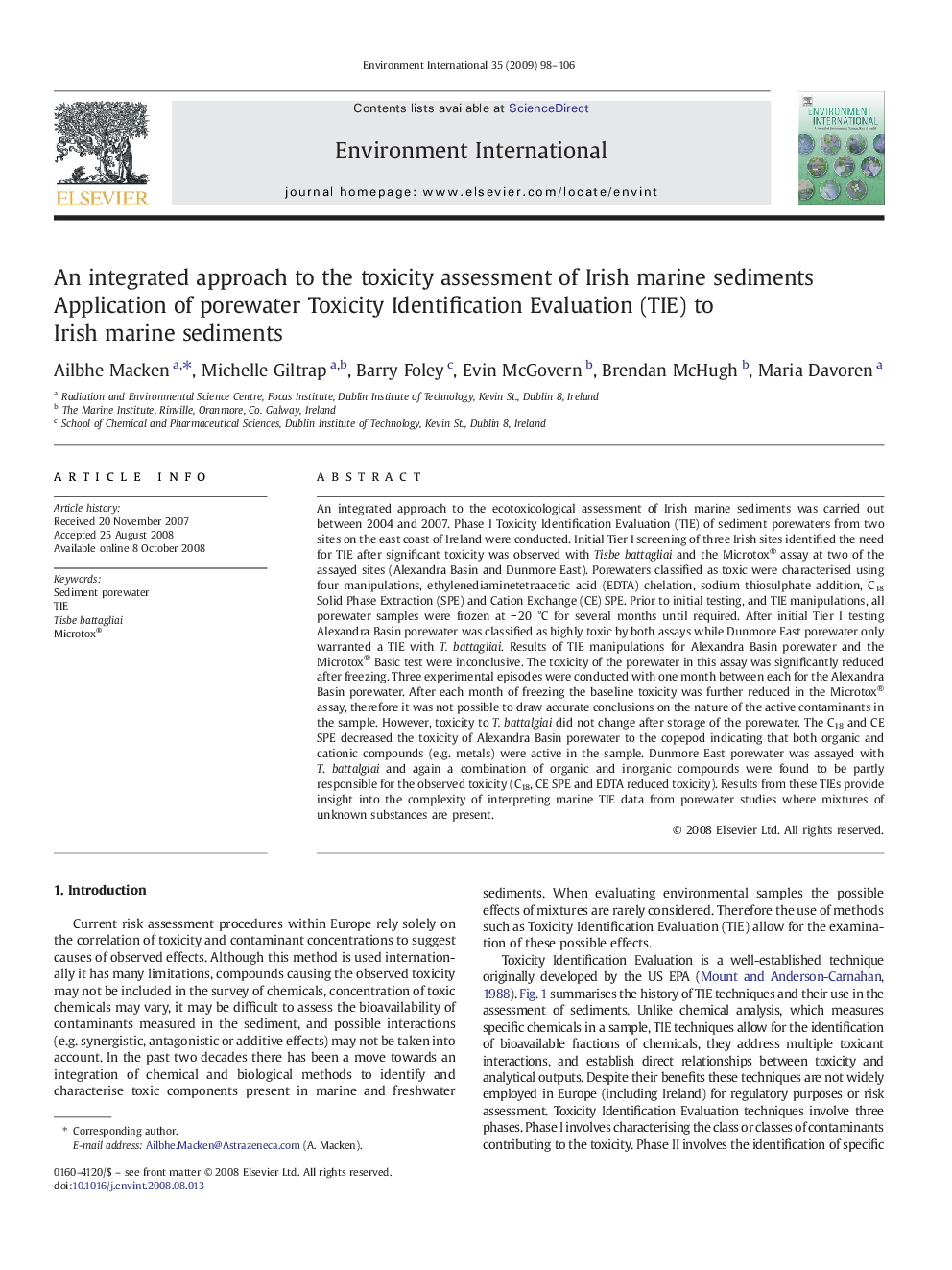| Article ID | Journal | Published Year | Pages | File Type |
|---|---|---|---|---|
| 4423452 | Environment International | 2009 | 9 Pages |
An integrated approach to the ecotoxicological assessment of Irish marine sediments was carried out between 2004 and 2007. Phase I Toxicity Identification Evaluation (TIE) of sediment porewaters from two sites on the east coast of Ireland were conducted. Initial Tier I screening of three Irish sites identified the need for TIE after significant toxicity was observed with Tisbe battagliai and the Microtox® assay at two of the assayed sites (Alexandra Basin and Dunmore East). Porewaters classified as toxic were characterised using four manipulations, ethylenediaminetetraacetic acid (EDTA) chelation, sodium thiosulphate addition, C18 Solid Phase Extraction (SPE) and Cation Exchange (CE) SPE. Prior to initial testing, and TIE manipulations, all porewater samples were frozen at − 20 °C for several months until required. After initial Tier I testing Alexandra Basin porewater was classified as highly toxic by both assays while Dunmore East porewater only warranted a TIE with T. battagliai. Results of TIE manipulations for Alexandra Basin porewater and the Microtox® Basic test were inconclusive. The toxicity of the porewater in this assay was significantly reduced after freezing. Three experimental episodes were conducted with one month between each for the Alexandra Basin porewater. After each month of freezing the baseline toxicity was further reduced in the Microtox® assay, therefore it was not possible to draw accurate conclusions on the nature of the active contaminants in the sample. However, toxicity to T. battalgiai did not change after storage of the porewater. The C18 and CE SPE decreased the toxicity of Alexandra Basin porewater to the copepod indicating that both organic and cationic compounds (e.g. metals) were active in the sample. Dunmore East porewater was assayed with T. battalgiai and again a combination of organic and inorganic compounds were found to be partly responsible for the observed toxicity (C18, CE SPE and EDTA reduced toxicity). Results from these TIEs provide insight into the complexity of interpreting marine TIE data from porewater studies where mixtures of unknown substances are present.
